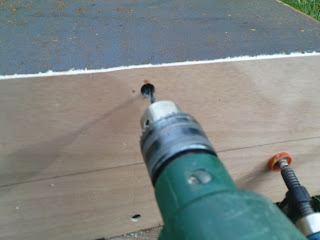Bulbkil
Balast Globe 5.80 składa się ze stalowej spawanej płetwy oraz przykręconego ołowianego bulba. Kil ma mocną konstrukcję i nie ma obawy o jego uszkodzenie przy zderzeniu z przeszkodą. Bulbkil jest przykręcony do bardzo mocnej części dna. Takie rozwiązanie wytrzymuje bez awarii wielogodzinne tłuczenie kilem o dno po wejściu na mieliznę. Na co trzeba szczególnie zwrócić uwagę wykonując płetwę? Bardzo ważne jest by spawa między płetwą a jej kołnierzem był dobrze położony i miał wymiar jak w dokumentacji. Druga bardzo ważna rzecz. Najpierw wywierćcie otwory w dennikach a dopiero potem odwzorujcie je na kołnierzu płetwy. Tutaj bulb został odlany z ołowiu przez profesjonalistów. Jak zrobić bulb w warunkach domowych możecie zobaczyć tutaj http://setkaatlantyk.blogspot.com/2012/10/ . Aby przykręcić bulb trzeba wywiercić otwory w ołowiu. Wierćcie na niskich obrotach i polewajcie wiertło i otwór wodą.
Bulbkeel
Globe 5.80 ballast consists of a steel welded fin and a bolted lead bulb. The keel has a strong construction and there is no fear of damaging it in the event of a collision with an obstacle. Bulbkil is bolted to a very strong part of the bottom. This solution can withstand many hours of the keel being hit on the bottom without failure after running aground. What do you need to pay special attention to when making a fin? It is very important that the weld between the fin and its flange is well make and has the dimensions as in the documentation. The second very important thing. First, drill holes for the mounting bolts in the bottom floor and only then trace them to the fin flange. Never the other way around. Here, the bulb was cast from lead by professionals. You can see how to make a bulb at home here http://setkaatlantyk.blogspot.com/2012/10/. To screw the bulb on, you need to drill holes in the lead. Drill at low speed and pour water over the drill bit and hole.














Brak komentarzy:
Prześlij komentarz
Uwaga: tylko uczestnik tego bloga może przesyłać komentarze.